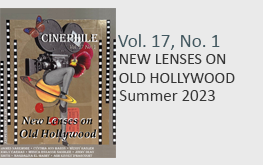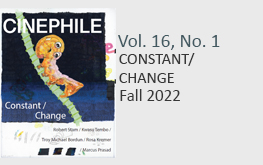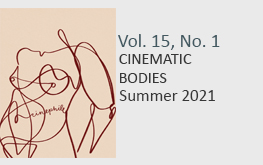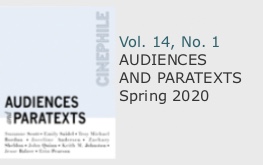Elena del Río
Every image is indistinguishable from its actions and reactions…Every image is…‘a road by which pass, in every direction, the modifications propagated throughout the immensity of the universe’. Every image acts on others and reacts to others, on ‘all their facets at once’ and ‘by all their elements’.
-Gilles Deleuze, Cinema 1: The Movement-Image
Inspired by Spinoza, Deleuze’s question on the body does not address a presupposed essence, but rather a series of potentialities that are actualized in becoming, forces that are formed in the body’s encounters with other bodies. For both Spinoza and Deleuze, the most pressing question is ‘what can a body do?’: “We know nothing about a body until we know what it can do […] what its affects are, how they can or cannot enter into composition […] with the affects of another body […] either to exchange actions and passions with it or to join it in composing a more powerful body” (Deleuze and Guattari 257). Deleuze’s thinking on the film image unmistakably draws from his philosophy of bodily forces. The image is an instance of becoming where body and brain become indistinguishable, where virtual forces are constantly becoming actual forms, forms that decompose back into the virtual, only to become actual again. In these brief remarks, I would like to follow Deleuze’s non-anthropomorphic method and address the powers of the kind of scene that is capable of mobilizing thought for itself as well as its audience.
A scene in a film can be a powerful attractor of thought, it can surely think without thinking. No human arms or legs are necessary for the brain of a scene to think. Instead, the tentacles of affection that attach to, and detach from, other body scenes are indispensable. A scene that is capable of thinking possesses these tentacles in a highly developed form—the more sensitive these tentacles, the greater the scene’s capacity to think, and to carry us along in its thinking trail. If we dispense with the ghost of causality and its crippling rationalities, we may see that these tentacles of affection are not beholden to causal determination, even less are they the sign of the clockwork functioning of morality.
If strong enough, a scene can sustain the entire scaffolding of a film together through its logic of sensation. So generous is the logic of creation/augmentation that animates such a scene that it always seeks to compose a more powerful body—not only for itself, but for other bodies/scenes in the film world, close and far. Generous creation then becomes the scene’s signature landmark. The thinking powers of a scene partake of the generosity of thought. Real thought multiplies and disseminates. It does not rigidly frame or fixate. Real thought is self-regenerative and regenerative of everything it comes into contact with, even if it passes through destruction. Real thought is unstoppable in its passion to do things. A strong scene is thus like the sun: at the affective disseminating centre of the film’s world, it radiates intense beauty, or terror, or sadness, and a myriad other emotions that have no names.
Those who insisted in the past that montage was the essence and foundation of cinema came very close to signaling what a scene can do. But this concept that they so ardently loved possesses powers that well surpassed their imagination—the molecularly refined, mind-boggling powers of relentless transformation. Montage is the alchemy of affection—the mechanism that enables an image to do something to another image and to have something done to it by the other image. But an image does not only transform, nor is it only transformed by, the image immediately contiguous to it. The power of montage travels further and is far more restless than any of us could have anticipated: “each new image retroactively introduces a new relation among the series of preceding images, and so the image to follow is subjected to rules that must be constantly reinvented; the rule is—improvise” (Flaxman 45). Let’s just say that montage is not a sedentary citizen, a good neighbour to the neighbours in its proximity. The tentacles of affection of montage are far reaching nomads, a multiplicity of constantly moving magnets that attract things/images close and far.
As Spinoza remarked, consciousness is deeply steeped in the psychological illusion of freedom, hence the power of the mind over the body is fundamentally imaginary (Deleuze, Spinoza 60). Consciousness does not know what a body/scene can do in terms of the causes that move it to act. We know very little of what a scene can do in terms of the non-causal impulses that move it, and through which it moves us—the connections and attractions that pull it towards other scenes/images. The real causes that move the juxtaposition of effects that is montage remain largely below the threshold of consciousness.
Contrary to appearance and common understanding, a scene’s borders need not be clearly demarcated. In the realm of affection, the power of a scene may not reach as far as its programmed borders, or it may far exceed them. There are scenes without beginning, middle, or end. Scenes that revolve around an image whose movement consists of variations of stillness, the points at which intensity can be really felt. Scenes that do not move toward any point in space, but traverse vertiginous stretches of time. The intense scene strikes you like a new, never-before-felt breath—if you are attentive, you are possessed. The scene is density of affect, the unscripted and unexpected.
There are scenes that will do this and more to your body and your mind, while others will do it to mine and not yours. Each of us is a different scene, its borders similarly ill defined—our bodies and minds the affective zones into which the scene seeks to resonate. Each of us receives from, and gives to, the scene, in our own way. These are orphaned and scattered thoughts, severed from the scenes that generated and nursed them. I could tell you which scenes have begotten these thoughts, but there would be too many. Instead, I invite you to watch a video my colleague Miriam Cooley and I made—available on the Cinephile website at www.cinephile.ca—that attempts to capture the power of a scene to travel beyond the confines of its ‘home-film’. This video that we called “Body Affect: As It Moves” is a non-verbal essay centered upon the potency of affect that a strong scene possesses and gives away in its encounters with other scenes.
Our selection and sequencing of these images sought to let the speeds and patterns of movement of the body express the affect in the most intense and resonant way. In this piece, the affective powers of a scene are not tied to a psychological content or process, but to a physics of the emotions that defies the limits and binaries of narrative, ideology, psychology, and morality (Two pieces of advice on the video: pump up the volume, and watch past the credits).
Very little can be said about what a scene can do. Indeed, few things that a scene can do can actually be said. The honesty of a scene resides precisely in this simplicity: a scene always does so much more than what it says.
Works cited
Cooley, Miriam, and del Río, Elena. “Body Affect: As It Moves.” 18-minute digital video. Aug. 2009. .
Deleuze, Gilles. Cinema 1: The Movement-Image. trans. Hugh Tomlinson and Barbara Habberjam. Minneapolis: University of Minnesota Press, 1986.
Deleuze, Gilles. Spinoza: Practical Philosophy. trans. Robert Hurley. San Francisco: City Lights Books. 1988.
Deleuze, Gilles, and Félix Guattari. A Thousand Plateaus: Capitalism and Schizophrenia. trans. and foreword Brian Massumi. Minneapolis: University of Minnesota Press, 1987.
Flaxman, Gregory. ed. The Brain Is the Screen: Deleuze and the Philosophy of Cinema. Minneapolis: University of Minnesota Press, 2000.







Wonderful piece!
Really inspiring, so glad I came across this. Both text and the video are superb – really felt it in my body.
[…] Torn Curtain, and Elena del Río includes her own short film in the Forward to the issue: What a Scene Can Do, Other essays look at the Snuff Coda, Eastern Promises, That 70s Sequence, the Post-Mortem […]